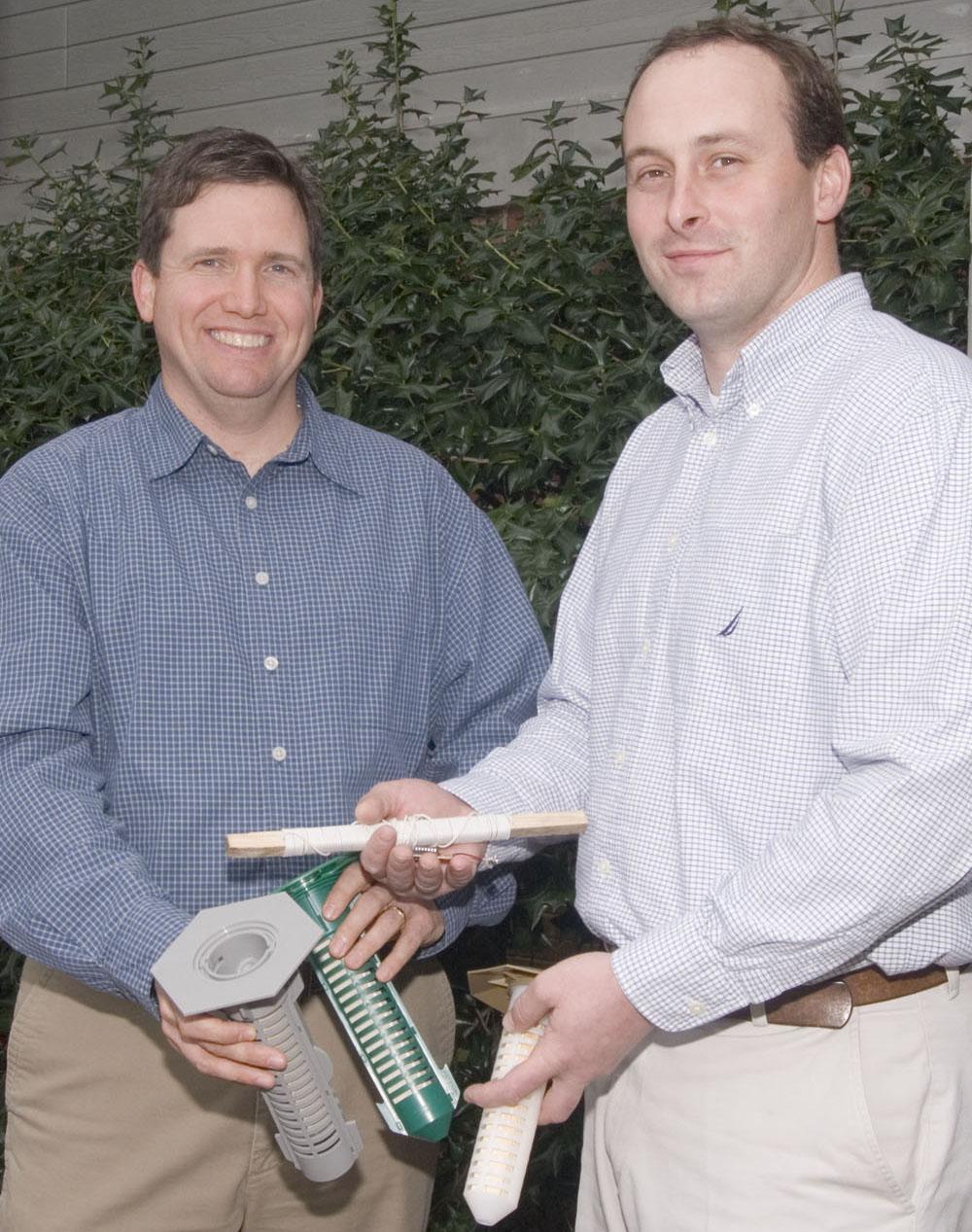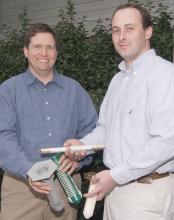Information Possibly Outdated
The information presented on this page was originally released on February 1, 2007. It may not be outdated, but please search our site for more current information. If you plan to quote or reference this information in a publication, please check with the Extension specialist or author before proceeding.
Research tunes in on termites
MISSISSIPPI STATE -- Research by Mississippi State University scientists has yielded a new weapon in homeowners' battle with wood-destroying termites.
Terry Amburgey of MSU's Forest Products Laboratory and employees of the U.S. Forest Service were called to Hawaii by the U.S. Navy about 14 years ago to combat infestations of Formosan termites in wooden poles supporting communications antennas at a naval base.
While there, the group discovered that termites are attracted to active antennas but not those that are inactive. The findings in Hawaii led to a series of experiments by Amburgey, MSU research associate Mike Sanders and U.S. Department of Agriculture Forest Service lab technician Craig Bell.
“We documented that subterranean termites are attracted to electric fields of certain wavelengths,” Amburgey said. “We patented, through the university, the technology used in the initial research.”
A decade later, Kevin Ragon, a doctoral student under Amburgey's direction, developed experiments demonstrating that both native termites and the imported and extremely destructive Formosan variety are attracted to certain electric wavelengths.
Additional research led to another MSU patent based on the work by Ragon, Amburgey, Sanders and MSU electrical engineering professor Pat Donohoe, who helped determine the exact frequency and intensity needed to alter termite behavior.
“We created a device to emit the exact frequencies required to manipulate termite behavior,” Ragon said. “Research shows that termites communicate through vibrations. The frequencies used in the patented MSU technology mimic these vibrations, which attract termites.”
The technology has been licensed to Ragon, fellow forest products doctoral student Shane Kitchens and Amburgey. They have formed TermiSys Technologies to handle the business end of the development of the technology.
“The fact that termites are random foragers has always been the Achilles' Heel of termite baiting systems,” Kitchens explained. “Because of that, many building sites are still treated with traditional liquid termiticides that require several hundred gallons of the product be applied for subterranean termite control.”
The TermiSys technology, he added, will make bait stations more effective by using electric wavelengths to draw the insects to the bait and increase the bait acceptance.
“The TermiSys system is a green technology because it cuts down significantly on the amount of insecticide needed to protect a building from termite damage,” Kitchens said.
In addition to protecting buildings, the MSU students hope to use the technology to protect urban trees, like those located in New Orleans' historic French Quarter.
“These oaks are just one of an estimated 50 species of plant materials susceptible to attack by Formosan termites,” Ragon said. “We are researching devices that can be placed near trees and other plants to repel termites.”
Information about the new termite control technology and TermiSys Technologies is available on the Web at http://www.termisys.com.






